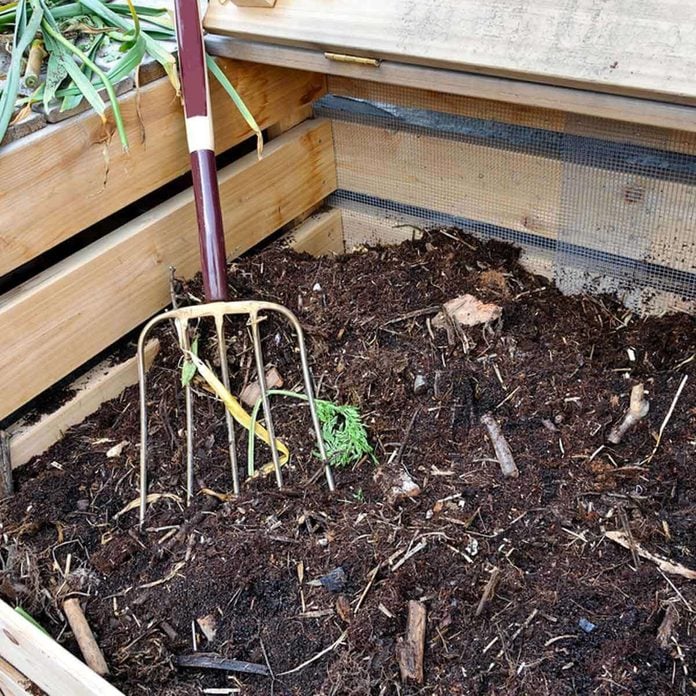
Benefits of Composting Leaves
There are many benefits to composting leaves. One, you will help reduce the amount of yard waste that ends up in landfills(reuse and repurpose the dry leaves). Two, composting creates nutrient-rich soil that will make for better-growing gardens and other spots in your yard. Three, it allows you to reduce your waste at home because you can throw food waste into a compost pile. Remember to not add any dairy products, breads or meat to your compost pile.
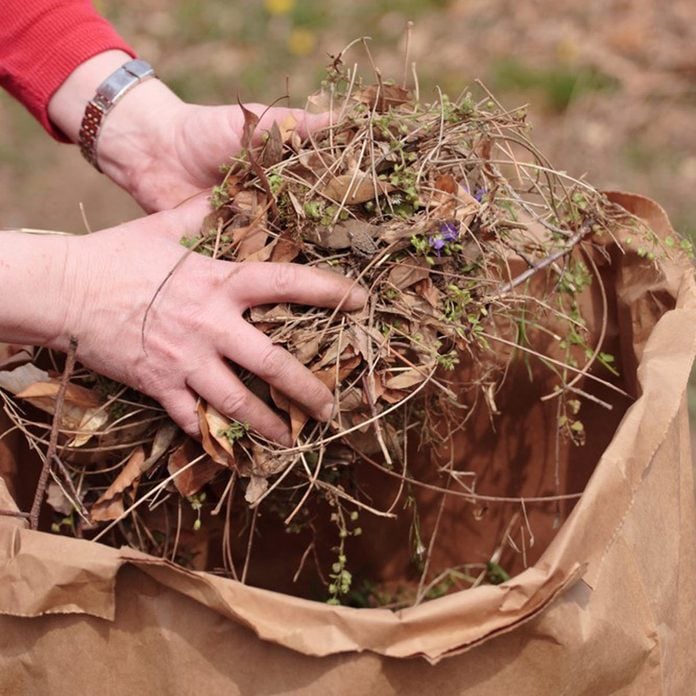
How to Compost Leaves
Shred leaves and mix with grass clippings or another source with a high level of nitrogen. Once you start mixing in your leaves make sure you start slowly and continue to stir the pile.
Be sure to make the pile high because the leaves will provide insulation during the winter months. Leaves will typically add to the acidity of soil so it’s important to test it in the spring and adjust the pH level before adding the soil to your garden.
Adding kitchen waste like coffee grounds will help boost the nitrogen levels of your compost but be sure to keep a balance between that and your carbon items like leaves. Try to maintain a 5-to-1 ratio of leaves to grass clippings/nitrogen source.
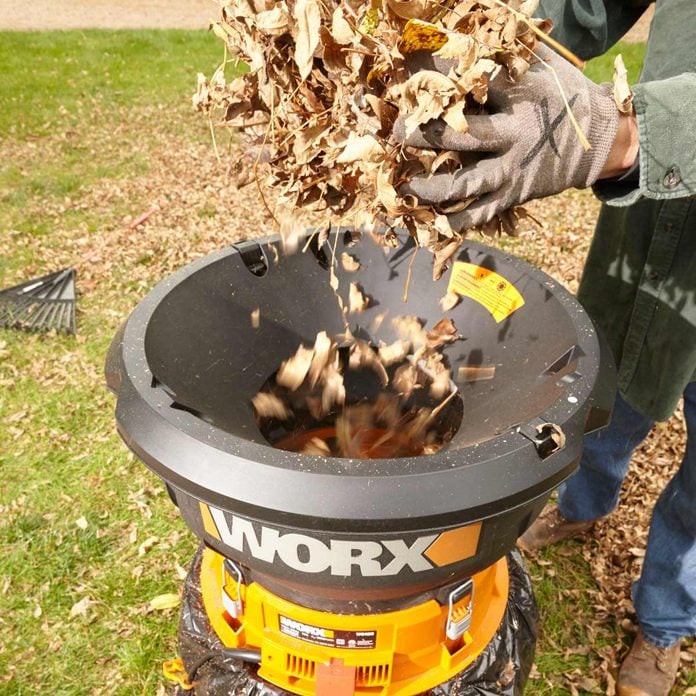
Use an Electric Leaf Mulcher
The WORX WG430 13-amp Electric Leaf Mulcher is basically a big hopper with a string trimmer at the bottom. Leaves go in the top; mulch comes out the bottom. Leaf mulch is perfect for aerating garden soil, surrounding trees or adding to a compost pile. WORX claims its mulcher reduces a pile of leaves at an 11:1 ratio. We didn’t conduct a scientific measure but were impressed by how such a large pile of leaves could fit in one bag.
The mulcher consumed its leafy dinner almost as fast as we could feed it. Some debris does fly around, so wear ear and eye protection. And you’ll get better results with dry leaves. The unit breaks down for easy storage.
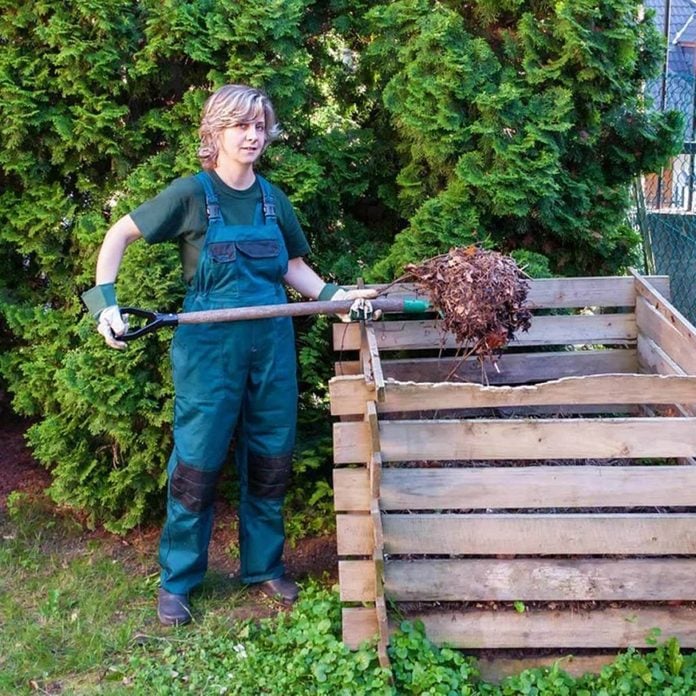
Where to Compost Leaves
There are a variety of ways to store your leaf compost. You can create a compost bin or use a tumbler or create a pile.
If you choose to create a pile, be sure to find a place that only receives partial sunlight. Too much sunlight will dry the pile out and inhibit decay. Be sure to pick a spot that has good drainage because excess moisture will drain into the ground. Don’t place a compost pile near concrete, cement or asphalt.
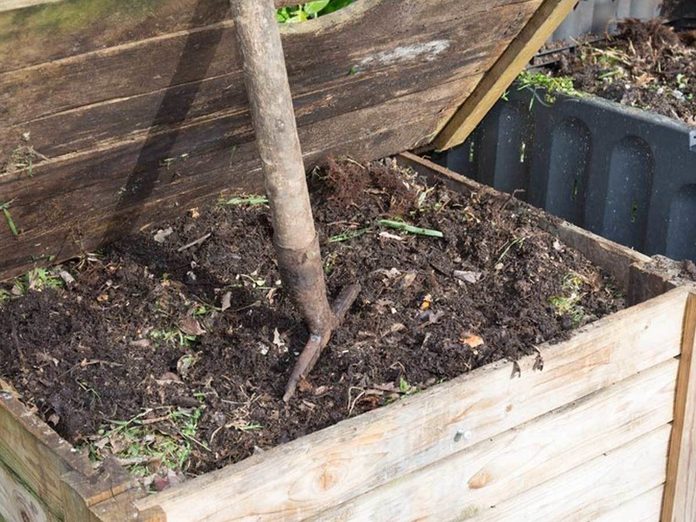
Maintaining a Compost Pile
Remember to stir your compost every two weeks with a shovel or a pitchfork. If possible, add water once a week to keep the pile moist.
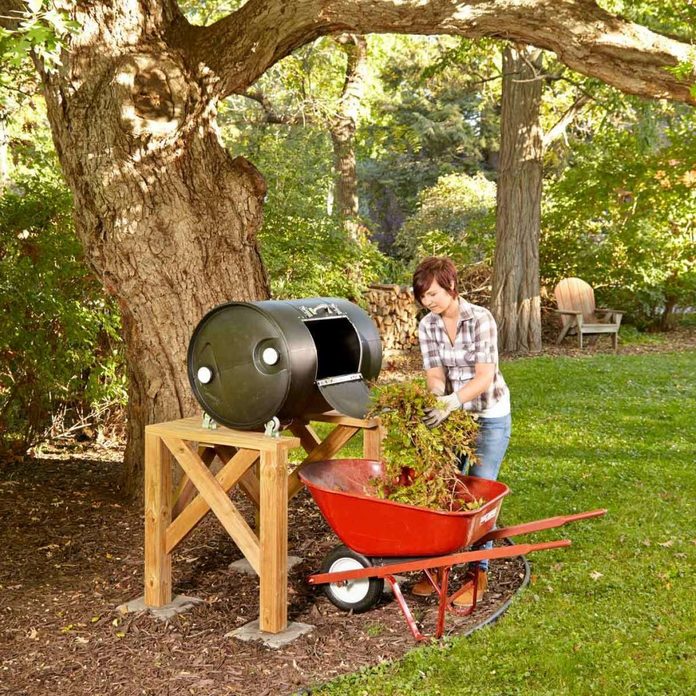
Monitor Moisture
In regions that receive a lot of rain and snow, moisture control is essential. This can be difficult with traditional compost piles, as the moisture soaks into the ground and is taken on by the compost. One solution is a compost tumbler which is sealed so the rain and snow melt is not a problem.
Tumblers can still take on some water, so if you go this route, don’t skimp on adding dry leaves to absorb any excess moisture. The tumbler is a great idea to try for winter composting.
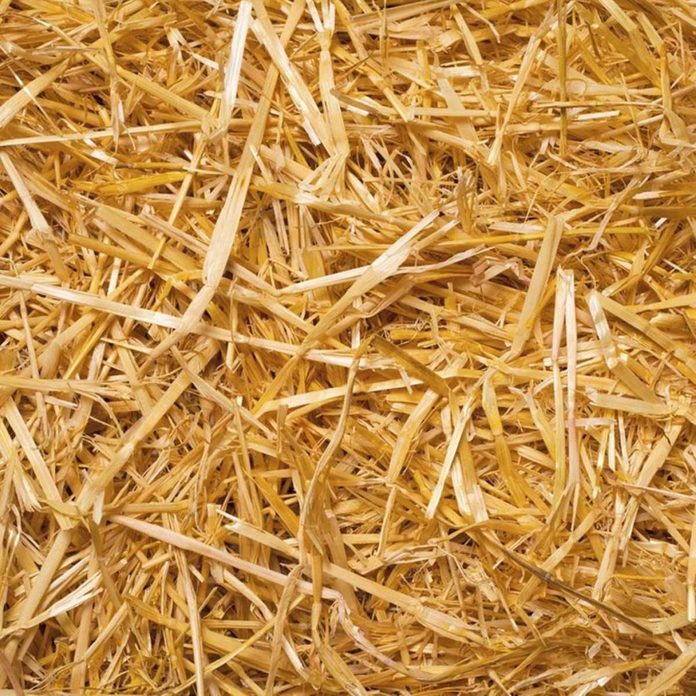
Insulate
During the colder months, the microbes in the compost must be kept active. For winter leaves composting, move compost bins to a sunnier part of the yard if possible. And use layers of leaves, straw, cardboard or sawdust to help insulate and keep warmth in the pile. Make compost directly in your garden bed by using composting in place approach.
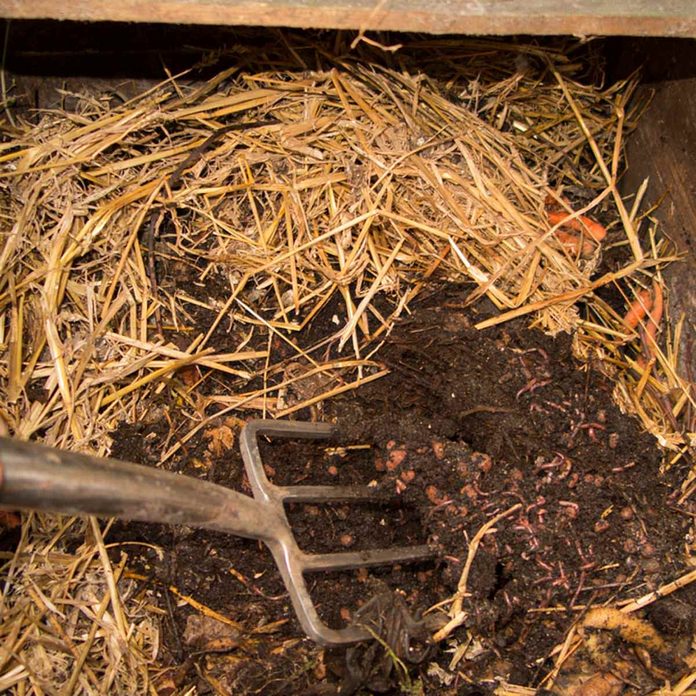
Composting Leaves Problems
Leaves tend to mat if they’re just tossed in a compost bin without getting mulched. If they’re matted, they prevent air and water from moving below the layer of leaves. This composting system makes the whole process a breeze.
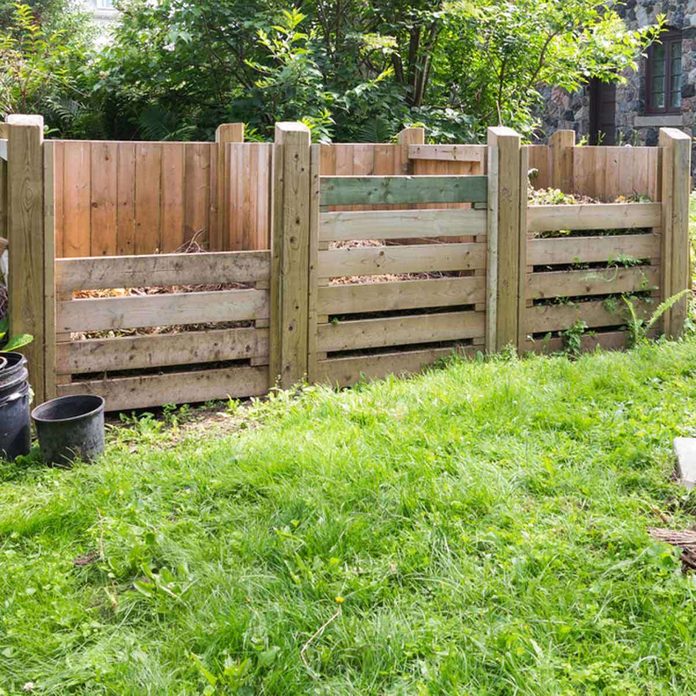
Leaves Can Take a Long Time to Break Down
Leaves that have lower lignin levels and higher calcium and nitrogen break down in about a year. Ash, cherry, elm, linden, maple, poplar and willow leaves are in this category.
Leaves that take longer to decompose include beech, birch, hornbeam, oak and sweet chestnut. Those leaves will typically take two or more years to decompose. Oak leaves and others in this group should make up 10 to 20 percent of your pile at most.
A good rule to remember with composting leaves is to know that green leaves can be added at moderate levels, red or yellow leaves should be added in small amounts and brown leaves should be avoided. Also, avoid black walnut and eucalyptus leaves.
Avoid wood and leaves from plants such as pine, spruce, juniper and arborvitae. Also, avoid plants that have been treated with weed killers.
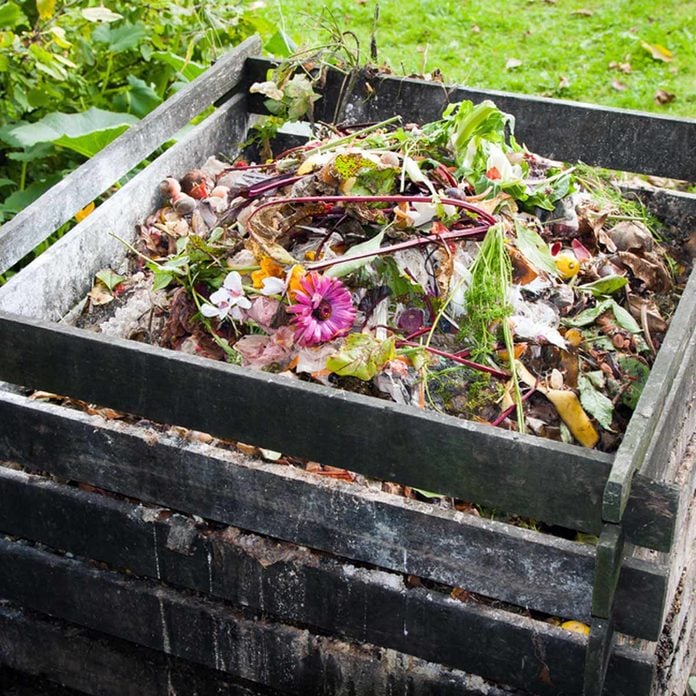
Other Leaf Compost Options
Another option for those interested in composting leaves is to keep them separate from your regular compost pile and keep the leaves altogether. The process remains much the same as you should mulch your leaves and place in a pile, bin or plastic bags.
You can add water if they’re dry. It will take longer for them to compost, around two to three years but it will make a good mulch.
Learn winter composting 101 so you can hit the spring running.